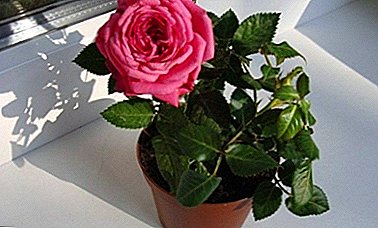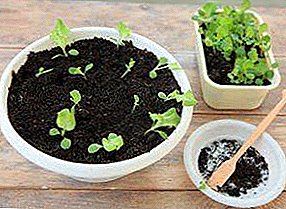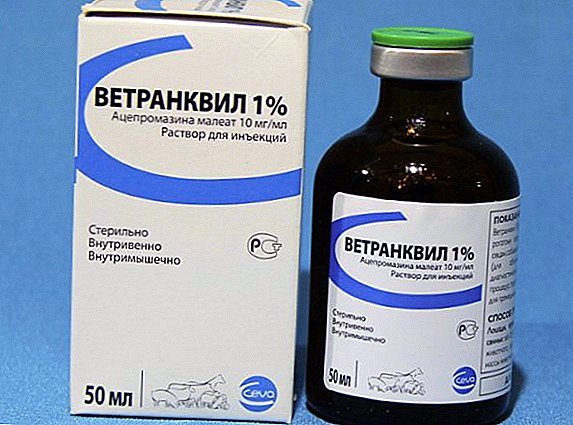
A room rose growing in a pot or greenhouse can get sick, start to wither, or stop blooming.
Without proper assistance, all these problems entail the death of a domestic flower.
Further in the article we will tell the most frequent reasons why the flower disappears in the pot, and also give recommendations on resuscitating the room rose.
How does resuscitation differ from conventional treatment?
A threat to the life of a plant exists if it is observed:
- wilting and falling leaves;
- lack of fresh shoots;
- non disclosure of buds;
- stem drying;
- blackening of flowers;
- mold or parasites.
Why does a potted flower disappear?
 The most common causes of death of indoor roses include:
The most common causes of death of indoor roses include:
- lack of moisture (perceived especially painful when there is a shortage of trace elements and humus in the ground);
- high content of lime in the soil;
- excess moisture in the soil (often due to improper drainage or lack of it);
- lack of sunlight;
- diseases (such as cancer or rust);
- pests (eg insect larvae).
The appearance of parasites is indicated by gnawed leaves, the appearance of dark specks, spider webs, or the insects themselves (most often it is aphid, spider mite, and thrips).
How to revive at home?
Consider how to reanimate the plant and what to do in the first place, if the home flower dies. If necessary, resuscitation of room roses can be helpful following measures.
Transfer
Transplantation will help to correct the situation in cases related to the wrong composition of the soil or the activity of the parasites living in it. Transplantation is very traumatic for the root system of room roses, so you need to proceed as carefully as possible to prevent damage to the roots. A transplant is recommended.:

- First, mark with a small spatula a circle of digging up the bush, choosing a diameter so that the side roots do not damage.
- Then the bush is dug in from all sides for the convenience of extracting an earthen coma with roots.
- With a shovel, a lump with roots is hooked up and, turning it over in a hole, lay it on its side.
- After that, the bush is removed from the pot, put on a piece of cloth or plastic wrap and wrapped in it to prevent shedding the earth when moving.
- Before transplanting, rose bushes are watered abundantly, transferred to a new place, and placed in a pit so that they lie no deeper than they were before the transplant.
- After the procedure, the rose bush should be cut off and watered with plenty of water.
To prepare the perfect soil for transplanting roses, you will need to mix compost, coarse sand, turf soil, humus and needles (proportions 1: 1: 3: 1: 1).
We offer to watch a video about the transplant of home rose, which began to disappear:
Changing care principles
Often the causes of malaise roses are reduced to improper care. In such a case, it is necessary to take measures that will allow it to recover:
- Most often it is necessary to increase the level of illumination. Indoor rose is a light-loving plant, so the pot with it must be moved closer to the southern windows or transplanted to the sunlit area in the garden.
- Do not forget to spray room rose.
- If the rose dries, you should increase the intensity of watering. Homemade rose should be watered with water at room temperature, which was previously settled. When the leaves turn yellow, check the soil in the pot: if it is too moist, watering should be stopped immediately, replacing it with a spray. If signs of root decay are noticeable, watering should be reduced or stopped altogether for a while.
Using special store tools
 If drooping roses do not show signs of life, they can be helped by resuscitation solution. To make it per 10 liters of water, add 1 ml of Zircon and 3 ml of Tsitovit. The resulting liquid water the roses at the root.
If drooping roses do not show signs of life, they can be helped by resuscitation solution. To make it per 10 liters of water, add 1 ml of Zircon and 3 ml of Tsitovit. The resulting liquid water the roses at the root.
One 50-milliliter bottle of Zircon costs about 350 rubles in Moscow and 370 rubles in St. Petersburg. Sold in flower shops. A 100-milliliter bottle of Tsitovita costs approximately 165 rubles each in stores in Moscow and St. Petersburg.
Chemical solutions can also harm the plant, so they should only be used in severe cases when the disease develops rapidly. Also, do not simultaneously apply incompatible drugs.
When the plant does not save?
If the flower managed to dry out completely, or the vast majority of its roots have rotted, no resuscitation will help it. The forecast is also disappointing if the plant is completely affected by mold or pests. In these situations, it is necessary to dig up and dispose of the affected plant in order to exclude infection and death of neighboring plants.
If the measures for the resuscitation of the flower do not give effect, it is necessary to carefully dig or pull the plant out of the pot and inspect its roots. If the roots are badly damaged by pests or rot, the last measure can help - pruning all old and affected shoots from the bush, which will facilitate its restoration. Cut dead roots meaningless, because they can not be restored.
What to do to prevent re-occurrence of problems?
 In order to prevent disease or death of roses, it is necessary to comply with certain preventive measures. First of all, do not neglect the observance of the rules of agricultural technology. If the plant is affected by mold or pests, proper care will help reduce damage to the flower.
In order to prevent disease or death of roses, it is necessary to comply with certain preventive measures. First of all, do not neglect the observance of the rules of agricultural technology. If the plant is affected by mold or pests, proper care will help reduce damage to the flower.
In flower shops, potted plants are fertilized with special dressings that support their beautiful commodity appearance. Also in the room where flowers are displayed, acceptable humidity is constantly maintained. Therefore, getting from the favorable conditions of the flower shop to the less favorable apartment conditions, the indoor rose can become less attractive, fade or ache.
It is recommended not to neglect care., even if the plant is healthy. Moreover, the care of the room rose is simple and does not require much time. Regularly pay attention to your plants and respond to symptoms of illness in time.
By following these simple tips and recommendations, you can help your indoor roses and extend their life. With proper care and sensitive attitude, this plant can delight you for a long time with its magnificent flowers.












